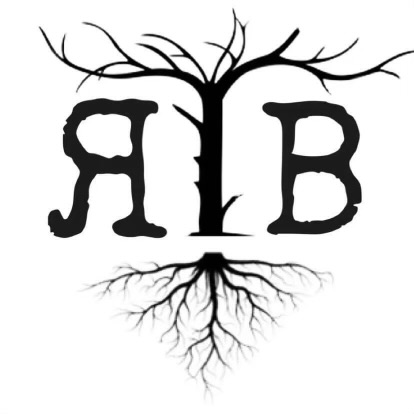Uncovering the Culprits Behind Sewer Line Clogs
The plumbing in your home is a complex system that includes a critical component – the sewer line. When this vital pipeline becomes clogged, it can lead to a host of problems, including backups, odors, and potential damage. In this blog, we’ll explore the common sources of sewer line clogs, how to recognize the warning signs, steps for prevention, and when it’s time to call in the experts at RootBusters Plumbing.
Common Sources of Sewer Line Clogs
Understanding what causes sewer line clogs is the first step in preventing them. Here are some of the most common culprits of clogged sewer lines:
1. Tree Roots: One of the primary causes of sewer line clogs is invasive tree roots. Trees seek out water sources, and if they find their way into your sewer line through small joints or cracks, they can grow and create blockages within your pipes
2. Grease and Oil: Pouring grease, oil, and fats down the drain may seem harmless at first, but over time, they can coagulate and create a sticky buildup that catches other debris and causes larger clogs.
3. Foreign Objects: Accidentally flushing non-flushable items like paper towels, baby wipes, or sanitary products can lead to blockages in your sewer line. These items don’t break down like toilet paper and can accumulate over time. If it doesn’t dissolve under water, it shouldn’t go down your drains
4. Mineral Deposits: In areas with hard water, mineral deposits can build up on the interior of sewer pipes. This accumulation narrows the pipe’s diameter and can lead to slow draining water clogs.
5. Old and Deteriorating Pipes: As sewer pipes age, they may become more susceptible to cracking, corrosion, and collapse. These issues can result in blockages and require pipe replacement.
Signs of Sewer Line Clogs
Identifying the early warning signs of a sewer line clog is crucial to preventing more significant problems. Look out for these indicators:
1. Slow Draining Fixtures: If multiple fixtures in your home, such as sinks, bathtubs, and toilets, are draining slowly or gurgling, it’s a sign of a potential clog in the main sewer line.l and time to call a professional plumber
2. Foul Odors: A persistent sewer odor in and around your home is often a sign of main line or branch line clogs. Blocked pipes can cause sewage to back up and emit unpleasant smells.
3. Backups: Sewage backups in toilets, sinks, or showers are a clear indication of a clog. This is a significant issue that needs immediate attention.
4. Puddles in the Yard: If you notice unexplained puddles or patches of lush grass in your yard, it could be a sign of a leaking or damaged sewer line. This may lead to clogs.
5. Unusual Noises: Gurgling or bubbling sounds from your plumbing when you use faucets, toilets or tubs may signal air trapped in the pipes due to a clog, requiring attention.
Prevention Strategies
Taking preventive measures can help you avoid the headache and expense of sewer line clogs. Here are some steps to follow:
1. Proper Disposal: Never pour grease, oil, or fats down the drain. Instead, let them cool and solidify in a container before disposing of them in the trash.
2. Use Drain Screens: Place drain screens or guards over your drains to catch hair, soap scum, and other debris before they enter and clog the pipes.
3. Regular Inspections: Schedule yearly inspections and maintenance rodding of your sewer line. A professional plumber can identify potential issues and address them before they lead to bigger issues.
4. Be Mindful of Landscaping: When planting trees and shrubs near your sewer line, choose species with less invasive root systems and avoid planting them too close to the line to prevent invasive roots entering your pipes.
5. Avoid Flushing Non-Flushables: Only flush toilet paper down the toilet. Everything else should go in the trash. Even when wipes say they are “flushable” they are not!
6. Address Mineral Deposits: In areas with hard water, consider using water softeners to reduce mineral buildup in your pipes, keeping them clean and clear.
When to Call RootBusters Plumbing
Despite your best efforts, sewer line clogs can still occur. When you encounter persistent or severe problems, it’s time to contact RootBusters Plumbing:
1. Repeated Clogs: If you’ve experienced multiple sewer line clogs in a short period of time, it may indicate an underlying issue with your plumbing system and require a professional with the proper equipment.
2. Backups and Odors: Sewage backups and foul odors are clear signs of a significant problem in your sewer line, and they require immediate attention.
3. Slow Drains: If slow-draining fixtures persist despite your attempts to clear them, there may be a more significant clog deeper in the sewer line requiring special equipment.
4. Yard Disturbances: Unexplained changes in your yard’s landscape, like sinkholes or pooling water, can indicate a problem with your sewer line.
5. Aging Pipes: If you have an older home with aging plumbing or plumbing not up to code, it’s a good idea to have your sewer line inspected to ensure it’s in good condition and no sewer line breaks detected.
In conclusion, sewer line clogs are a common issue that can disrupt your daily life and pose a threat to your home and wallet. Understanding the common sources of clogs, recognizing the signs, and taking preventive measures are essential to maintaining a optimal plumbing system. When problems arise, don’t hesitate to contact the experts at RootBusters Plumbing for prompt and professional assistance. Your plumbing is a vital part of your home – keep it flowing smoothly and free of clogs. Call today for a free estimate 844-247-7668.
